Creating Sustainable Change for Communities and Forests in Asia and the Pacific
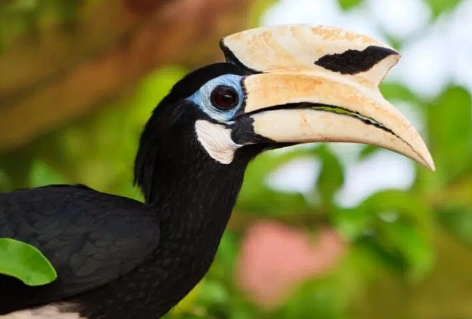
The importance of forests for sustaining life is widely recognized. However, it is concerning to witness the ongoing global threats and rapid loss of forests worldwide.
The forests in Asia and the Pacific region are home to a rich diversity of birds and wildlife. Despite their significance, these forests have been vulnerable to deforestation and illegal logging. However, there is a glimmer of hope as local communities in Indonesia, Malaysia, Papua New Guinea, and The Philippines are beginning to make a positive difference in preserving these forests.
The countries mentioned are home to a remarkable array of plant and animal species, including many that are exclusive to these regions. Indigenous peoples and local communities rely on these forests for their sustenance, while also nurturing a profound spiritual and cultural connection with these natural landscapes.
Since its establishment five years ago, the Asia-Pacific Forest Governance Project has placed local communities at its core. These individuals possess unparalleled knowledge of the forests and hold a deep commitment to their preservation. However, their efforts have been impeded by limited technical expertise and political clout. To address this challenge, the Forest Governance Project has embarked on a mission to empower and involve indigenous peoples and local communities, providing them with the necessary skills to proficiently manage their invaluable forest resources.

According to Dr. Hum Gurung, the Forest Governance Project Manager at BirdLife International, the project has played a crucial role in enhancing the capabilities of their partners who have extensive experience working with local communities and indigenous peoples in important forest sites. Through close collaboration and engagement, these partners have significantly contributed to the knowledge and skill development of local and indigenous communities in areas such as forest monitoring, conservation, and the sustainable utilization of forest resources for their livelihoods.
The importance of inclusive and effective forest governance extends beyond local communities and has significant implications for global climate action. By aligning with the objectives of the Paris Agreement, the Sustainable Development Goals, and the proposed targets of the Global Biodiversity Framework, improved forest governance plays a vital role in realizing a fair, nature-positive, and carbon-neutral future. In light of this, the urgent need for forest conservation, restoration, and sustainable management has become more pronounced than ever before.
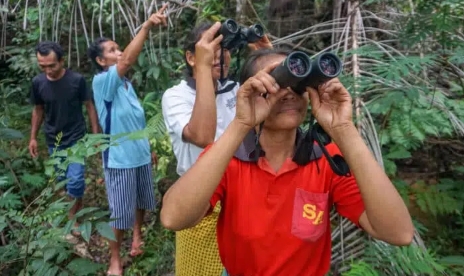
Indonesia
Indonesia, with its vast forest cover accounting for approximately 3% of the world’s total, is a remarkable habitat for a staggering 1,812 bird species. However, the sustainable management of these forests has been an ongoing struggle, as conservation initiatives face tough competition from intensive farming practices and rampant deforestation. Often driven by poverty and the urgency for immediate income, the preservation of nature has taken a backseat.
In the biodiverse ecosystem of Mbeliling, located on the island of Flores, Burung Indonesia (BirdLife Partner) has been collaborating with local communities to implement conservation strategies that safeguard the forest while simultaneously improving the well-being of the residents. The key focus of their work has been active community involvement, engaging villagers in identifying the challenges faced by the forest and their own livelihoods, and collectively determining sustainable management approaches.
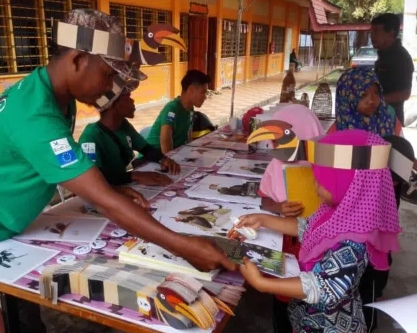
To ensure effective implementation, a committee appointed by the local community oversees the execution of the conservation initiatives, and these agreements are duly acknowledged by policymakers in the government. Ongoing monitoring activities are conducted in the area to assess the progress, and detailed reports are shared with both Burung Indonesia and the government to maintain transparency and accountability.
While the approach may sound promising in theory, the actual results have been quite positive. The ongoing monitoring efforts have revealed a decrease in threats to wildlife, particularly bird species, indicating a positive change in the ecosystem. Additionally, the local community has gained a deeper understanding of the interconnectedness between a healthy environment and their own well-being. Furthermore, the implementation of sustainable practices has opened up eco-friendly business opportunities for the community, such as exporting sustainable timber. To support these initiatives, the provision of timber processing machines, protective equipment, and official training for workers has further contributed to the improvement of local livelihoods.

Malaysia
Despite more than half of Malaysia being covered by forests, the survival of these forests is under significant threat from deforestation. One of the major challenges faced is finding a delicate equilibrium between economic development and sustainability, as the country heavily relies on forest resources for its economy. Compounding this challenge is the lack of effective forest governance, which further exacerbates the issues at hand.
Under the Forest Governance Project, the Malaysian Nature Society (BirdLife Partner) has introduced a national ‘Forest Watch’ platform. This platform empowers local communities by providing them with real-time information regarding forest cover change, forest fires, illegal logging, and other threats to the forests. By equipping communities with this valuable data, they are better equipped to take action and contribute to conservation efforts. Furthermore, the project has organized various workshops to educate and train local communities and indigenous peoples on forest governance matters and forest policies.
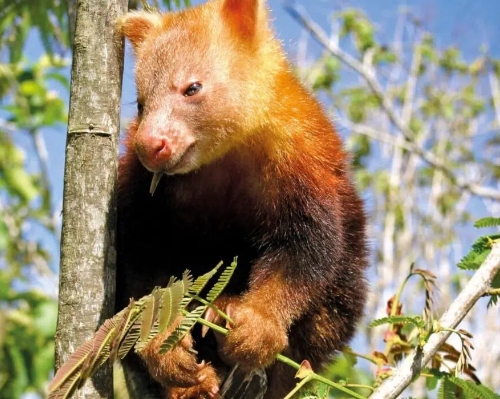
Community-based forest monitoring initiatives in the Central Forest Spine of Peninsula Malaysia and the heart of Borneo are playing a significant role in forest conservation and the protection of species residing in these areas. These efforts are also empowering local communities, especially the Orang Asli indigenous people. The monitoring activities involve the participation of local “Hornbill Guardians” and volunteers who regularly monitor the populations of the eight hornbill species found in Borneo. They diligently record sightings of nests, fledglings, and the number of young chicks and adult birds, providing valuable data for conservation efforts.
Moreover, the engagement and expertise of the Malaysian Nature Society in forest policymaking, including their involvement in REDD+ readiness processes, highlight the significant role that non-state actors can play in addressing gaps at different scales and sectors. Their involvement serves as a valuable bridge to facilitate policy integration and ensure comprehensive approaches to forest conservation and sustainability.
Papua New Guinea
Papua New Guinea’s forests, known for their rich biodiversity and 39 species of birds-of-paradise, are primarily owned by local communities and tribes who rely on them for sustenance and housing. Unfortunately, these forests face significant threats from commercial logging operations and the conversion of land for agricultural purposes, particularly for oil palm plantations. As a result, large portions of the forests are being degraded, putting both the unique wildlife and the livelihoods of local communities at risk.
The Tenkile Conservation Alliance (TCA) has played a crucial role in promoting sustainable forest management among local communities in Papua New Guinea. By emphasizing the value and advantages of such practices, TCA has successfully influenced community behaviors, thanks to training programs and technical assistance provided in partnership with the University of Papua New Guinea. Through the use of genealogy, community members have been able to trace their ancestral villages, enabling them to establish clear land boundaries and enter into landowner agreements. This has significantly strengthened their capacity to actively manage and monitor their land resources.
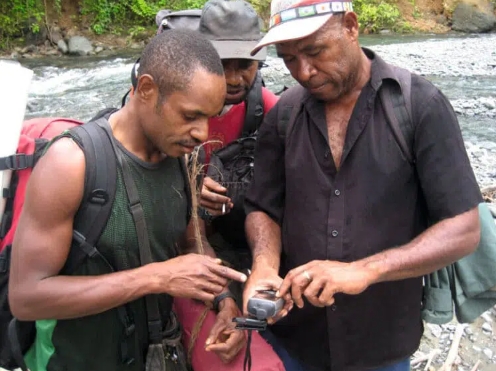
With the assistance of technical training, several landowners have proactively put an end to illegal logging activities on their land. TCA’s efforts have not only focused on conservation but have also introduced alternative livelihood opportunities to the communities. By engaging in activities such as chicken rearing and cultivating crops like rice and vanilla, community members have been able to diversify their income sources, reducing their dependence on hunting endangered forest wildlife. This shift towards sustainable livelihoods has been instrumental in promoting both conservation and economic well-being within these communities.
In order to assess the effectiveness of their approach, TCA and the local communities actively monitor the population of tree kangaroos in the region. This monitoring initiative serves as a valuable indicator of the forest’s health, including its cover and resource utilization. The data collected through this monitoring process has played a crucial role in informing land-use planning decisions and shaping forest policies at the national level. By utilizing this information, stakeholders can make informed choices to ensure the long-term conservation and sustainable management of the forest resources.
The Philippines
With over 641 bird species and rich biodiversity, the Philippines is recognized as a biodiversity hotspot. However, the future of these species is under threat as the country faces one of the highest rates of tropical deforestation globally. Logging, mining, and land conversion driven by poverty contribute to this alarming trend. Urgent action is needed to address these challenges and protect the valuable ecosystems and wildlife that call the Philippines home.
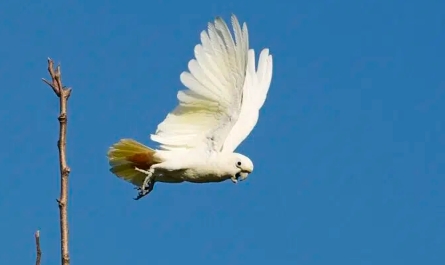
In a determined effort to reverse the situation, the Haribon Foundation (BirdLife in the Philippines) has empowered local communities to become proactive forest defenders, known as ‘bantay gubat’, who now take the lead in forest conservation initiatives. Through comprehensive training programs, these forest defenders have gained knowledge and skills in various areas, including literacy, financial management, environmental law, organic farming, and reforestation techniques. To further enhance communication between local communities and wildlife authorities, Haribon introduced the KaPatrol mobile app in 2021, allowing bantay gubat and other citizens to report forest threats effectively. This transformation aims to create a network of dedicated individuals working together to protect and preserve the forests of the Philippines.
Mita Chabeli Pangan, speaking on behalf of Haribon’s Forest Governance Project team, expressed immense pride in the successful integration of modern conservation practices with the traditional knowledge and rituals of indigenous tribes. Despite challenges such as cultural differences, educational disparities, and the restrictions imposed by the COVID-19 pandemic, Haribon has managed to bridge these gaps and create a harmonious collaboration. This achievement highlights the organization’s commitment to inclusive and sustainable conservation, honoring the rich heritage and wisdom of the indigenous communities involved.

“The transformation we have witnessed among the tribal communities we work with is truly remarkable. From once being unable to read or write, these communities now actively participate in forest governance initiatives alongside their local government units. They have embraced the use of advanced technology for monitoring, protection, and communication purposes, and have successfully established and managed biodiversity-friendly businesses. What is truly inspiring is that throughout this journey, they have managed to preserve and uphold the sustainable traditions passed down to them by their ancestors.”
Looking to the future
As the Forest Governance Project draws to a close, the outcomes achieved over the past five years in these four countries reaffirm the pivotal role of local communities in driving effective and impactful forest conservation. While the project itself may have come to an end, the journey towards safeguarding forests for future generations is far from over. Local communities remain steadfast in their commitment to the long-term preservation of their forests, ensuring their enduring protection and prosperity.